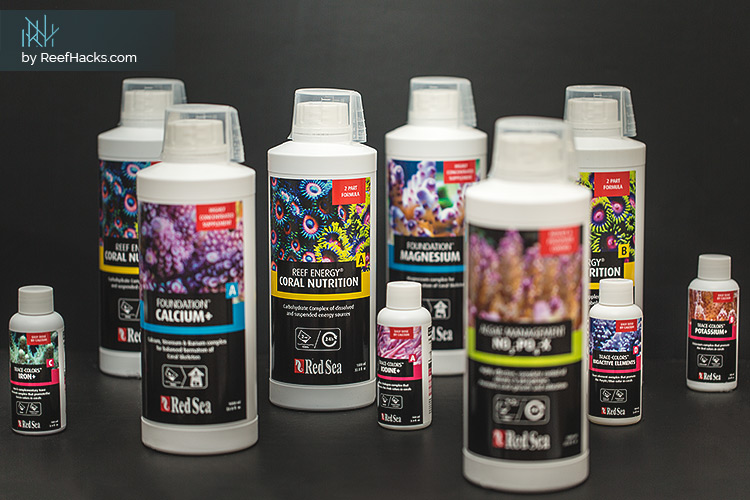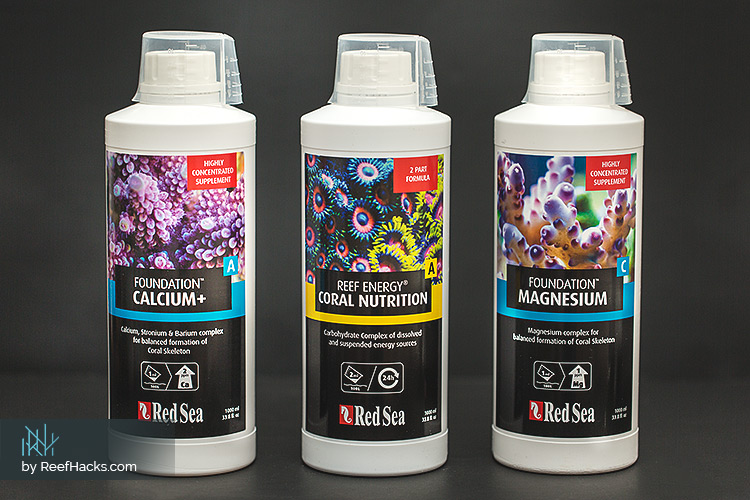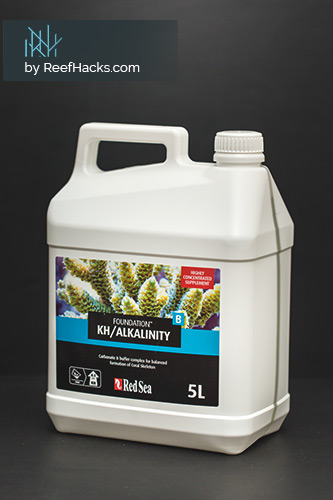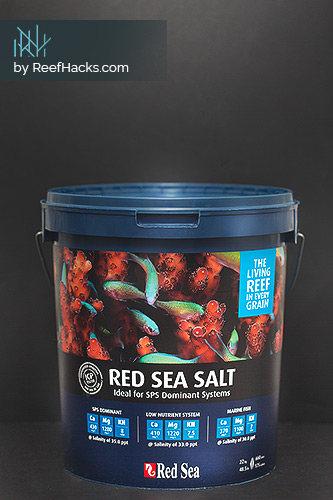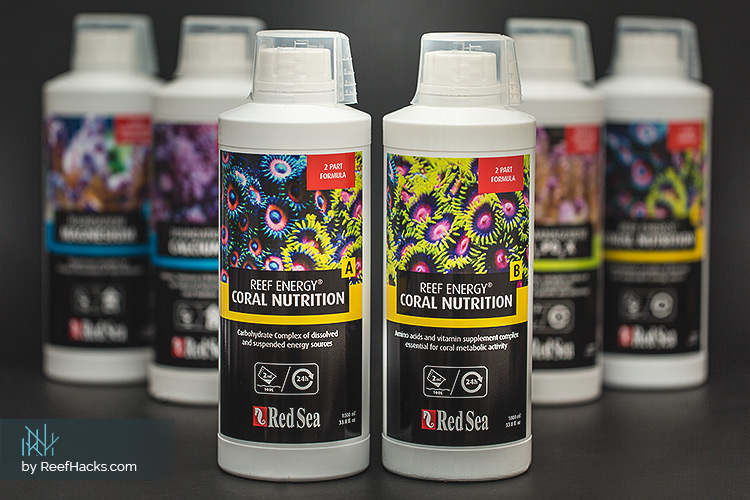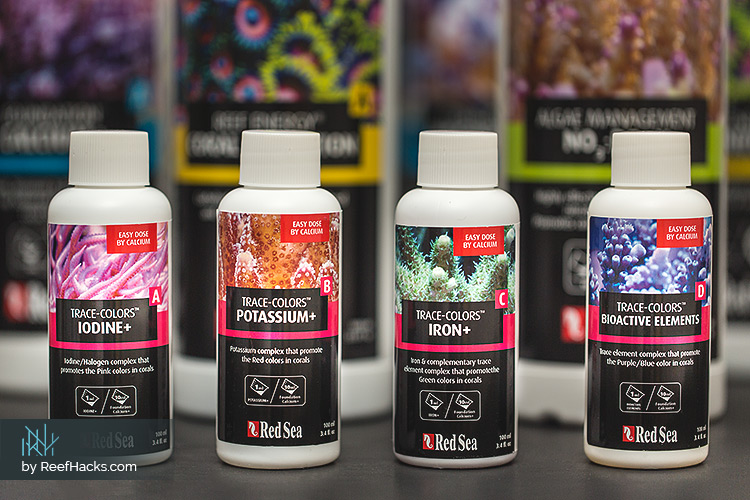Several weeks ago, I took a break from the office and grabbed lunch with a longtime friend who recently took up reefing. You can imagine what our conversations mostly entail.
As we finished our meal, and eyed the desert bar across the street, her face curled with a hue of frustration. We had just been discussing my newest aquascaping design, but noticing the growing tension, I asked what’s wrong. She replied, “I just don’t understand how I’m supposed to learn it all. There’s just too much!”
I knew exactly what she meant, even before she had time to explain further. Ultimately, my dearest friend was experiencing a common frustration among novice reefers: mastering tank care for optimum development.

Author:
As a lifelong aquarist, Yuliya has an endless curiosity about our underwater universe. After graduating with a bachelor’s in Environmental Engineering, she transformed her passion into a successful career. While working at the Institute of Environmental Protection in Moscow, her passion for saltwater and reef aquariums only increased. Moving to the United States in 2013, Yuliya embarked on another impactful journey by sharing her unprecedented experience for all aquarium hobbyists ... Read More.
Throughout my career as a professional and hobbyist reefer, I’ve witnessed countless versions of this outward expression of frustration, fear and confusion. In fact, I’ve known far too many promising reefers simply give up because they realized they have neither the time or capacity to master the seemingly limitless idiosyncrasies of maintaining a reef tank.
I completely understand. Unless you hold prior experience dealing with biological and scientific side of being an aquarist, achieving ideal water parameter balance can feel impossible. And, in many ways, it is.
As she continued to voice her frustration, my compassionate heart flittered with excitement. Little did she know, I was about to introduce her to a care program capable of streamlining reef tank care and maintenance.
After deciding to splurge and continue our conversation over a slice of cake, I began explaining a concept that would ultimately change not only the way she approached reef tank care, but also the vitality of her underwater universe.
Did I divulge closely guarded reefing secrets? Did I provide her with a magic spell capable of thwarting nuisance algae and eliminating the need for water testing? Well, let’s just say if I had either at my disposal, I would be one rich mystic aquarist.
No, I simply introduced her to a program that’s regarded as a complete and streamlined method to genuine tank maintenance: The Red Sea Reef Care Program, or RCP.
For the next couple of hours, we dove into this program. Afterwards, while taking the long route back to my office, I began thinking more about the RCP. For quite some time, this methodology has been among my favorite ways to boost tank health and vitality. However, I never really thought about explaining this research-based process of caring for reef tanks.
That is, until now.
Whether you’re just starting your watery adventure into reefing, or already have an established tank, the Red Sea Reef Care Program is something every aquarist should at least understand.
Now, I’m not here to tell you it’s the absolute best way to care for your aquarium, or that it’s the end-all solution for tank problems. However, I can say the RCP can help catalyze tank development, health and vitality in a more streamlined and straightforward process.
As I mentioned earlier, I’m no mystic aquarist, and this is no magic solution. Yet, when it comes to making reef tank care a little easier, the RCP more than satisfies.
Throughout this article, I’m going to discuss the basic elements of the Reef Care Program and offer a no-nonsense viewpoint. Because, let’s be real, who has time for yet another promotional post? I sure don’t!
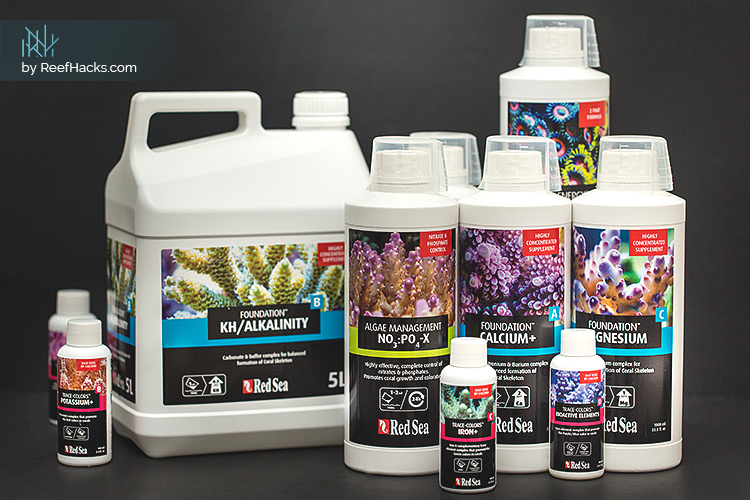
Redefining Expectations - Red Sea Reef Care Program.
Essentially, the Red Sea Reef Care Program is an inclusive methodology designed to synergistically create a healthier ecosystem. This multilayer program treats individual parameter components through years of deep-level biological/physiological research.
What really caught my attention when I first learned about the RCP is its approach to treating specific elements without loosing sight of the entire tank ecosystem.
Though a tank ecosystem is a mixture of isolated parts, the efficiency and stability of one part affects all others. In a way, caring for an aquarium requires a dual mastery of micro (small) and macro (large) techniques.
For most aquarists, it takes years of trial-and-error to master both care categories. Although you should never stop instigating and learning about tank care and management, this doesn’t mean waiting years until your aquarium isn’t sick or underwhelming.
The Reef Care Program simplifies the science, and art, of maintaining optimum ecosystem homeostasis by:
- Managing biological processes individually while understanding its collective impact.
- Compartmentalizing optimum parameters based on needs and requirements of tank inhabitants and/or type of ecosystem desired. For example, the program for SPS Dominant tanks is different from Marine Fish or Mixed Reef aquariums.
- Simplify dosing/maintenance techniques to immediately achieve and sustain parameters.
On a personal note, it’s not the accuracy and ease of refined tank care that I appreciate most. Rather, it’s how the Reef Care Program approaches this topic. The RCP is built upon the understanding of tank symbiosis. By solidifying the interrelated elements of an aquarium, it’s easier to grasp care techniques.
The Four Pillars of Care - Reef Care Program Architecture.
Essentially, the RCP spent years researching how corals use specific elements. But that’s not the most exciting part. What’s truly unique about the Reef Care Program is its ability to accurately replenish the necessary building blocks for stronger development, energetic balance, and optimum pigment development.
What separates RCP from other dosing strategies, which typically involve only Calcium, Magnesium, and Alkalinity, is how these trace elements are delivered. Other methods may also have all the necessary trace elements to support this development, but that doesn’t mean corals can use them.
Ultimately, the success of the Reef Care Program comes down to trace element bioavailability. The RCP delivery method ensures each trace element is delivered in such a way that coral maximize each essential element. Basically, this method reduces product waste while increasing desired results. This is the reason why it's separated into four bottles. Sounds like a win-win to me.
While there’s much to be said about each pillar, the following is a brief rundown of overarching purpose and implementation technique.
Pillar #1 - Foundation Elements.
What would you consider the foundation in which a tank is built upon? If you scrape away the aesthetic and mechanical elements, water chemistry (also referred as water parameters) form the essence of life within your tank.
In fact, the success of an aquarium is directly impacted by three elements:
In short, the essential biological processes coral require to sustain healthy growth and life rely on the accuracy and concentration of these elements.
As you may already know, maintaining optimum water parameters is as easy as a 5:00 a.m. aerobics class. It’s just not going to happen, at least very often. That’s where the Foundation Elements pillar comes into play.
This pillar is crafted to replenish water parameter values so they’re not only accurate, but perfected based upon your aquarium type. For example, Reef Hacks uses the SPS Dominant parameters for our, as you guessed it, SPS reef tank. Our optimum values are:
- Salinity - 34 ppm
- Alkalinity - 7 dkh
- Calcium - 430 ppm
- Magnesium - 1280 ppm
Now, let’s say you have a Mixed Reef aquarium type. Your optimum parameter levels are:
- Salinity - 34 ppm
- Alkalinity - 11.5 dkh
- Calcium - 450 ppm
- Magnesium - 1350 ppm
In total, there are four primary aquarium types the Reef Care Program is designed to manage. I suppose this is why this pillar is known as Foundation Elements.
To execute this pillar within the RCP, you’ll use the necessary supplements crafted by Red Sea. Each parameter features its own supplement and dosing is very easy. Of course, you’ll need to regularly perform water tests to help maintain parameters.
So, what test kit should you use? I suggest finding a brand you trust and enjoy and sticking with them. In terms of the Reef Care Program, you’re free to use any test kit. We are using Salifer, Hanna and ATI Lab Test Kit for ICP-OES Complete Water Analysis.
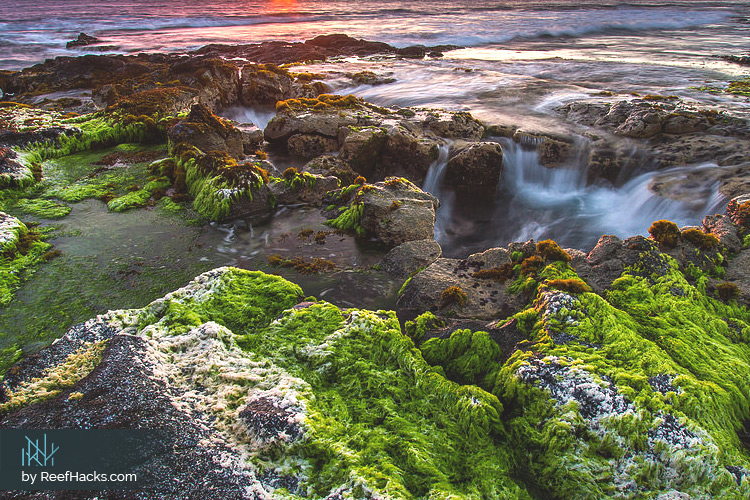
CC BY-SA 2.0 by LotsaSmiles Photography
Pillar #2 - Algae Management Program.
For most reefers, algae is a conflicting topic. On one hand, nuisance algae is just that, a nuisance that needs to be eliminated and prevented. But, on the other hand, specific algae plays a direct role in maintaining a healthy tank ecosystem.
Understanding the role of algae, and its various forms, is fundamental when caring for a reef tank. While nuisance algae is not only annoying, but potentially hindering to coral growth, another algae works in a symbiotic process to promote coral vitality.
Zooxanthellae algae, or “good” algae, lives within coral soft tissues. Both coral and algae live off the biological activities the other produces. In natural reefs, Zooxanthellae growth is monitored by nitrates and phosphates released from coral. This helps maintain coral-to-algae balance.
However, your aquarium doesn’t support this natural balancing act. Moreover, without precise control over nitrate and phosphate levels, not only will you have unruly Zooxanthellae algae, but also nuisance algae and stunted coral development.
The Reef Care Program offers a stable method for optimum algae control with its product, NO3:PO4-X Algae Management. Essentially, this simply the Red Sea nutrient export product. Out of all the products offered by the RCP, this is one you can replace with another.
For example, we used this product during cycling, but ultimately replaced it with a PAX Bellum ARID N18 chaeto reactor. Also, as mentioned earlier, feel free to use any nutrient export method that you like.
Pillar #3 - Coral Nutrition Program.
Just like us, the quality and ingredients of coral food determines not only its current health, but future growth. Considering the importance of nutrition, it’s no surprise the Reef Care Program crafted its own nutritional plan.
While Zooxanthellae algae provides coral with nearly all of its required nutrition through photosynthesis, it’s unable to fully satisfy the complex nutritional requirements of coral. That’s where products such as this one come into play.
Perhaps the most noteworthy topic when discussing coral nutrition is its reliance on Dissolved Organic Matter, or DOM. Since coral can’t physically roam the tank in search for food, it relies on DOMs in the water to find them.
This is where many reefers find themselves in trouble. Without precise dosing, and quality ingredients, DOM feeding can result in excess water pollution.
However, the Coral Nutrition Program is a masterfully crafted collected of ideal food sources that are easy to digest and least-impactful on overall tank stability. As with other pillars, aquarium type determines dosing levels. The entire program consists of two products:
- Reef Energy A - Carbs, amino acids, fatty acids, suspended protein flocks.
- Reef Energy B - Amino acids and complex vitamins.
Pillar #4 - Coral Coloration Program (Trace Elements).
For many, this is the most exciting pillar. Up until now, each program component focused on elements responsible for indirectly supporting the aesthetic vitality of coral. But, what if you discovered a list of 31 trace elements, that when manipulated via precise dosing, could dynamically boost coral vibrancy?
That’s exactly what the Red Sea researchers uncovered.
Essentially, there are 31 specific trace elements noted as supporting color pigment production. Divided in 4 bottles Trace-Colors A, B, C & D supplements contain the 31 minor & trace elements present in the skeleton and soft tissue of all corals.
This pillar aims to increase the availability of these 31 trace elements via precise supplementation. Each dose is calibrated based on aquarium type to optimize element concentration.
Best part? These can be simply and safely supplemented based on your daily Calcium consumption without any additional water testing. Just dose A,B,C and D by using 10:1 ratio to the "Foundation Calcium+" supplement.
The Red Sea Reef Care Program - Final Thoughts.
While there is obviously more to this program, such as each Aquarium Type Recipe, it’s clear to see this is a solid option. From supporting the synergistic ecosystem of your aquarium, to streamlining dosing with quality products, I definitely recommend checking out this program.
Before signing off, I want to add a slight word of caution. Be careful when combining supplements from multiple companies. While it’s possible to sustain optimum water parameters and tank vitality through a myriad of brands, it’s also possible to accidentally overdose certain elements.
With that being said, we’d love to hear from you! Do you have any questions about the RCP, or any other reef topic? If so, head on over to the Reef Hacks Facebook page and send us a message!
On behalf of the entire Reef Hacks team, Happy Reefing!
by Yuliya Ivanova for ReefHacks.

